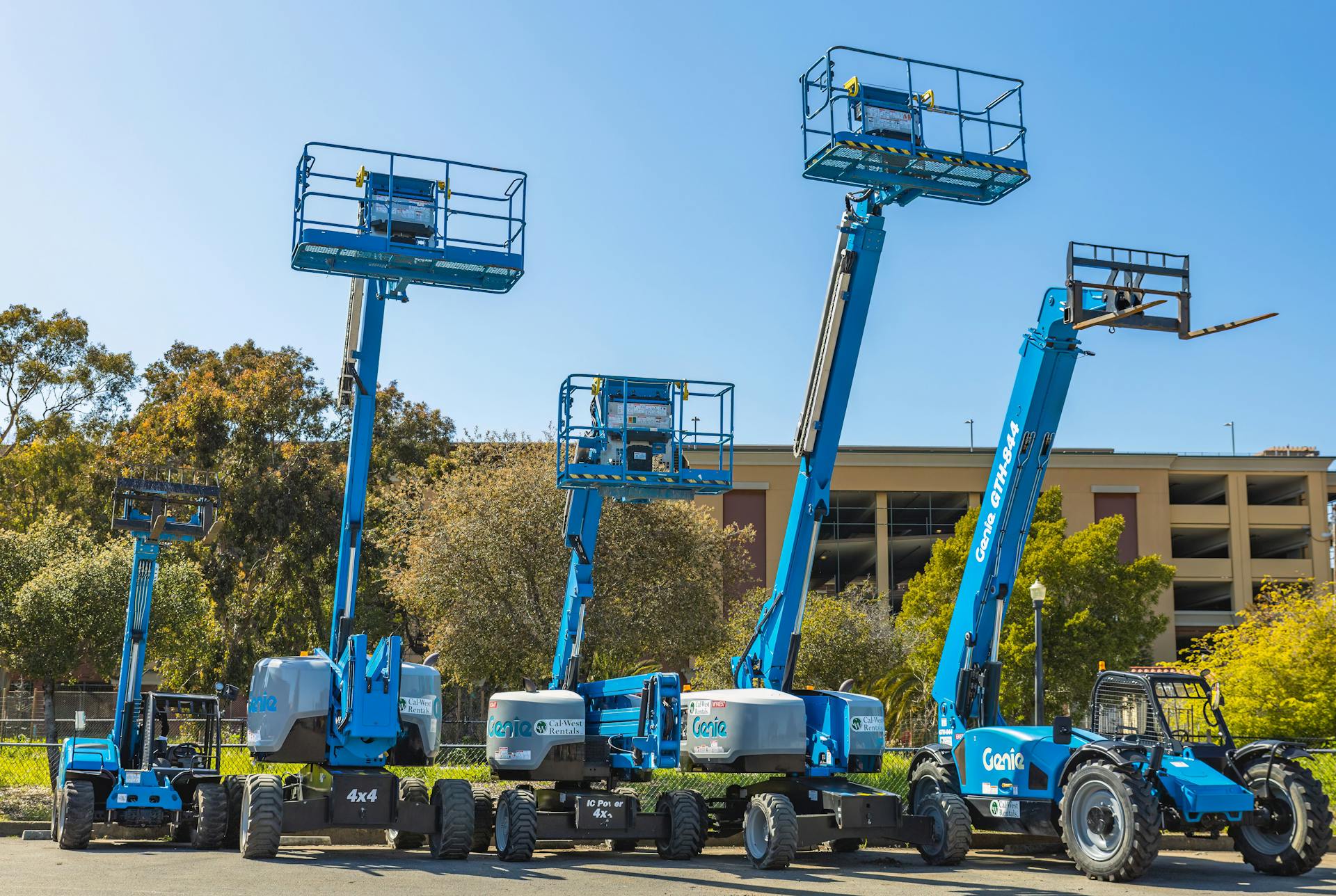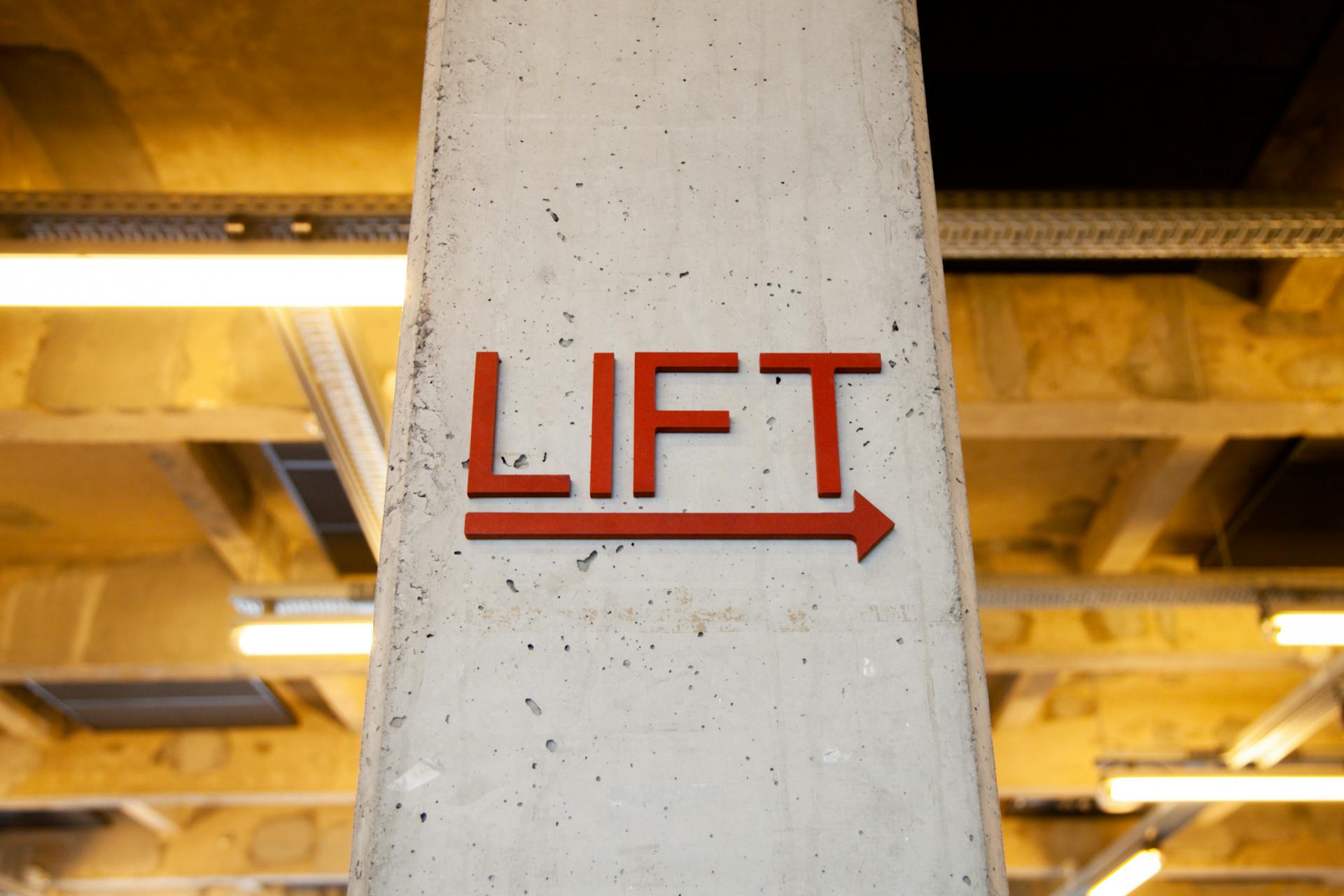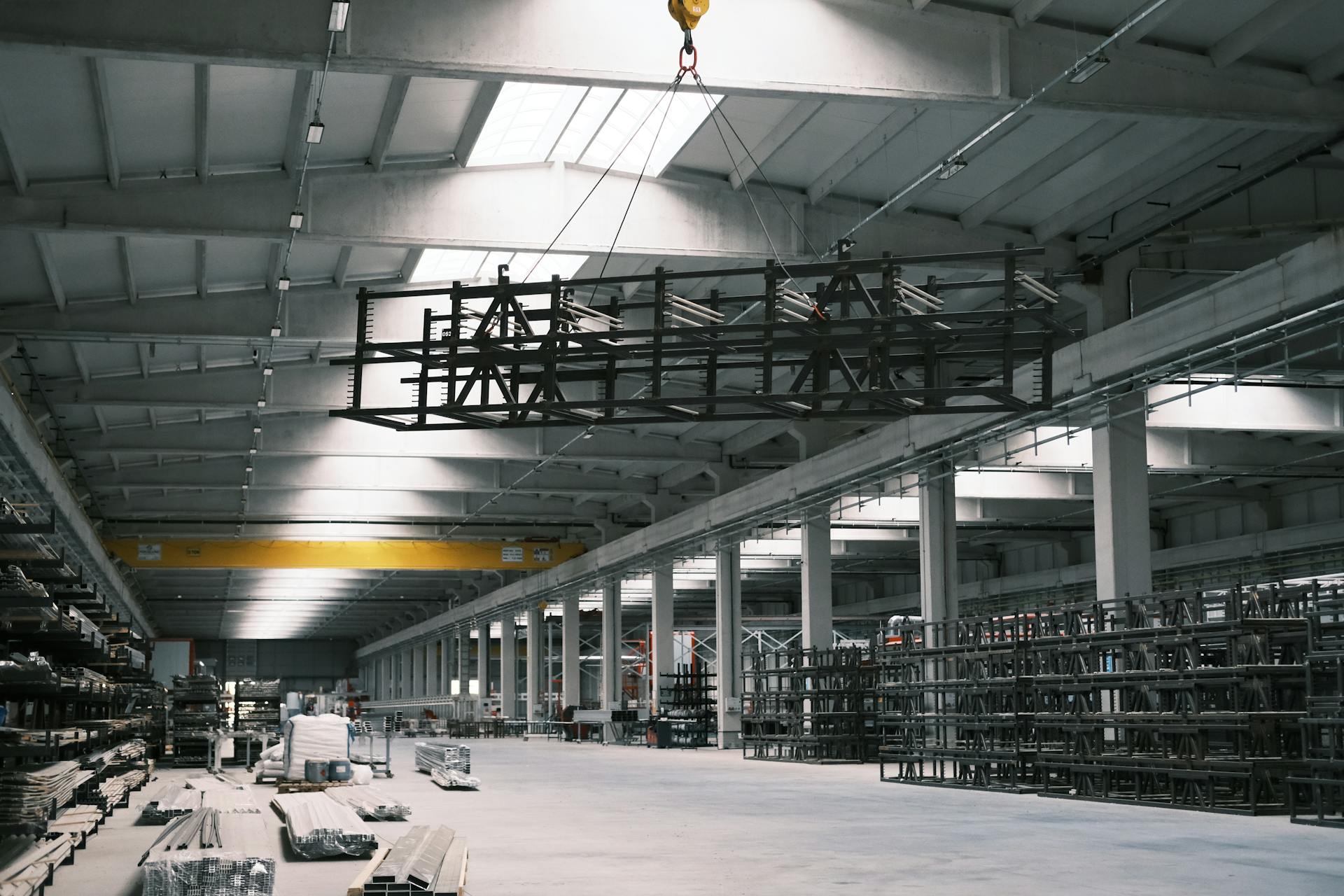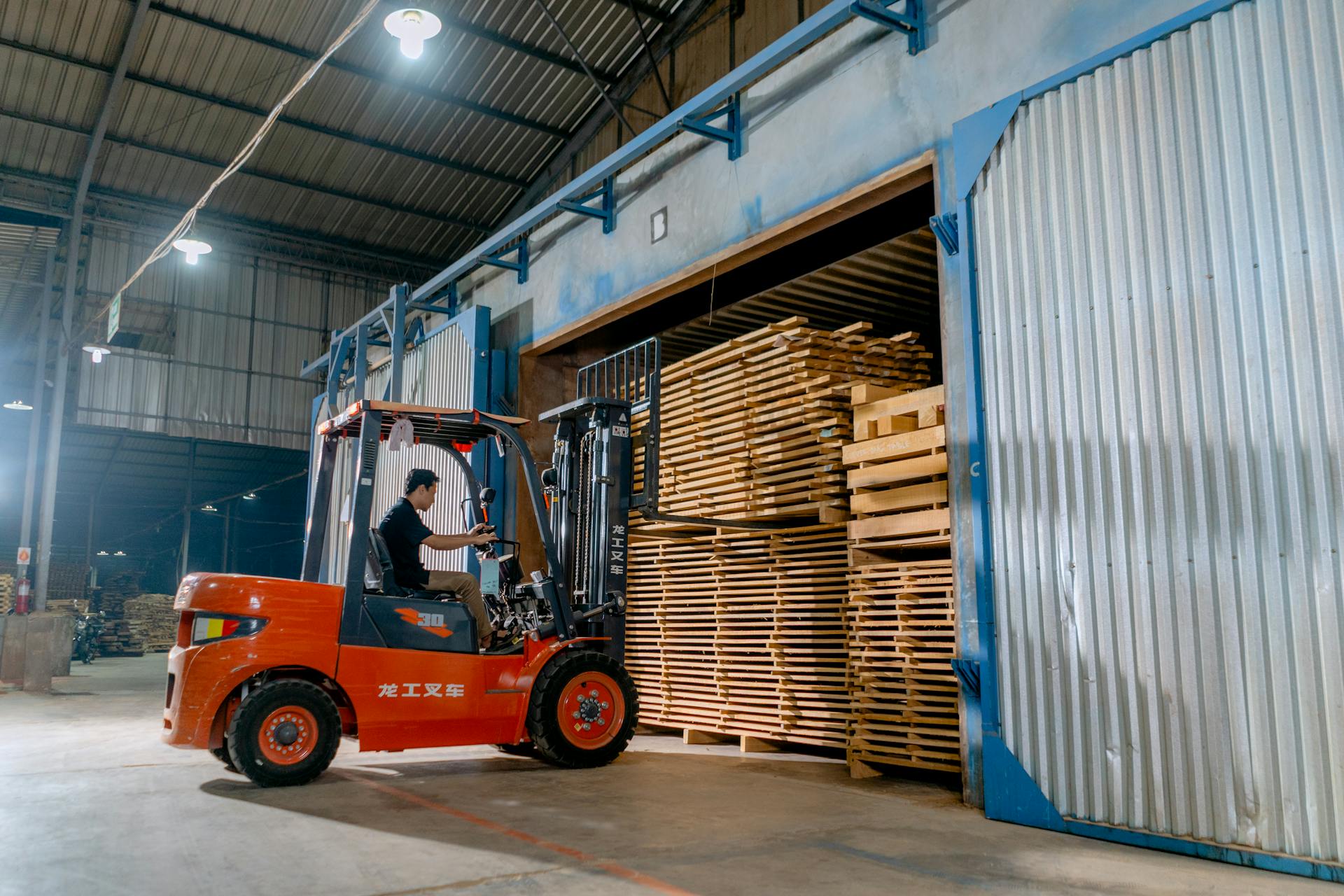
The global tail lift market is experiencing significant growth, driven by the increasing demand for efficient and safe cargo handling solutions. According to a recent report, the market size is expected to reach $1.3 billion by 2025.
The growing e-commerce industry is a major contributor to this growth, as online retailers require efficient and reliable logistics systems to meet the demands of fast and flexible delivery. This has led to an increased adoption of tail lifts in warehouses and distribution centers.
In terms of regional growth, the Asia-Pacific region is expected to be a major driver of the market, with countries such as China and India experiencing rapid industrialization and urbanization. This has created a high demand for cargo handling solutions, including tail lifts.
The market is also being driven by the need for safety and efficiency in cargo handling, as tail lifts offer a safer and more efficient alternative to traditional forklifts and other cargo handling equipment.
Check this out: Dry Bulk Material Handling Systems
Market Overview
The tail lift market is a growing industry that has seen significant demand in recent years. The global market is expected to grow at a CAGR of 4.5% from 2024 to 2034.
The market has been segmented into various types, including cantilever lifts, column lift, tuck away lifts, and slider tail lifts. Each type has its own unique features and applications.
According to the market analysis, the global tail lift market has been classified into product types, applications, and regions. The market is expected to be driven by the increasing use of advanced technology in warehouse operations and rising logistics demand.
The market is expected to be dominated by the North America region, followed by Europe and Asia Pacific. The market is also expected to be driven by the growing demand for tail lifts in the aerospace and defense, food and transport logistics, and waste management industries.
Here is a breakdown of the market by region:
The market is expected to be driven by the increasing demand for tail lifts in various industries, including aerospace and defense, food and transport logistics, waste management, leasing, and rental business, healthcare & medical devices companies, automotive manufacturing companies, emergency services, and many others.
Broaden your view: Digital Marketing for Moving Companies
Market Analysis
The tail lift market is a rapidly growing industry, driven by the increasing demand for logistics operations in various sectors. The Asia-Pacific region is dominating the market, with a potential rate due to the surge in e-commerce business in the region.
The region's e-commerce market is expected to grow with an exponential annual growth rate of 32% during the next five years, according to the World Economic Forum. This growth is attributed to the increasing number of online shoppers, with over 260 million people already online in the Asia-Pacific region.
The tail lift market is also driven by the growing pharmaceutical, healthcare, bioproducts, and renewable energy initiatives in North America and Europe. These industries are expected to dominate the market in the future, generating demand for tail lifts.
Here are some of the key industries driving the demand for tail lifts:
- Aerospace and defense
- Food and transport logistics
- Waste Management
- Leasing, and rental business
- Healthcare and medical devices companies
- Automotive manufacturing companies
- Emergency services
- Others
Some of the major players in the tail lift market include BAR Cargolift, Dhollandia, PALFINGER, Anteo, and Wastech, among others.
By Technology

In the market, you'll find various types of tail lifts that cater to different needs and technologies. Telematics enabled tail lifts are a great example, offering advanced features and remote monitoring capabilities.
These tail lifts can be integrated with telematics systems to provide real-time data on vehicle performance and location. This can be especially useful for fleet managers who need to keep track of their vehicles.
Standard tail lifts, on the other hand, are a more basic option that still gets the job done. They're often used for smaller vehicles or in situations where advanced features aren't necessary.
Smart tail lifts, which are IoT integrated, take it to the next level by offering advanced sensors and monitoring systems. This can help prevent accidents and reduce maintenance costs.
Custom tail lifts are designed to meet specific needs and can be tailored to fit unique requirements. They're often used in industries where standard options won't suffice.
Here are some key types of tail lifts by technology:
- Telematics enabled tail lifts
- Standard tail lifts
- Smart tail lifts (IoT integrated)
- Custom tail lifts
Global Dynamics

The global tail lifts market is driven by increasing demand from industries like e-commerce, logistics, and freight services, which have seen significant growth in recent years.
The rise of e-commerce has been a major factor in this growth, with the annual global growth rate of the e-commerce sector reaching 17% between 2017 and 2022, according to the World Economic Forum.
Commercial vehicle registrations have been on the rise, contributing to a growing market for tail lifts in regions like North America and Europe, as reported by the U.S. Department of Transportation.
The need for enhanced mobility and safety in the transportation of goods has led to greater adoption of tail lifts in various vehicles, particularly trucks and delivery vans.
Government initiatives to promote the safety of logistics operations and vehicle standards have further enhanced the market's growth prospects.
The global tail lifts market is expected to grow steadily over the next few years, supported by increased demand from emerging markets, as well as the development of advanced tail lift solutions.
If this caught your attention, see: Boat and Yacht Transportation Market
The demand for tail lifts is also being driven by the growth of industries like pharmaceuticals, automobiles, and manufacturing, which require safe and efficient loading and unloading of goods.
However, the market is not without its challenges, including stringent regulations related to workers' safety and high operational and maintenance costs associated with tail lifts.
Despite these challenges, the market is expected to be fueled by the rising number of manufacturing industries and technological advancements in tail lift technology, including the use of hydraulic and pneumatic systems.
Country Insights
The tail lift market is experiencing growth in many countries, with the United States expected to hold a major share.
The United States in North America is a key player in the tail lift market, with manufacturers using globalization to reach the country and partner with suppliers and manufacturers.
Canada and Mexico are also showing an upward trend in the tail lift market, with manufacturers taking advantage of globalization to reach these countries.
A fresh viewpoint: Electric Reach Stacker
South Korea is another country where the tail lift market is growing, with manufacturers expanding their reach to this market.
The Asia Pacific region is also witnessing a surge in demand for tail lifts due to rapid industrialization and growth of the e-commerce sector.
In the United States, the commercial vehicle market is expected to see a growth of around 3% annually through 2027, which directly impacts the tail lift market.
This growth is driven by the increasing demand for material handling solutions in various sectors, such as logistics, warehousing, and transportation.
The International Trade Administration reports that the U.S. commercial vehicle market is expected to see a growth of around 3% annually through 2027, which directly impacts the tail lift market.
The tail lift market in the United States is expected to benefit from the growth of the e-commerce sector, which is driving the demand for efficient cargo handling solutions.
The value of shipments for motor vehicles and parts in the United States reached $592 billion in 2022, a 6% increase from 2021, highlighting the growing need for efficient cargo handling solutions.
The European logistics industry is also expected to grow, with a CAGR of 4.5% over the next five years, which will further increase the demand for effective material handling equipment, including tail lifts.
Explore further: Material Handling Conveyor Systems
US Market

The US market for tail lifts is booming, with a projected market value of US$ 20.91 Billion by 2024E.
This growth is driven by the increasing demand for fast turnaround in the delivery of consumer products, as well as the rise of online retail.
The tail lift market is expected to expand at a CAGR of 7.3% from 2024 to 2034, with a projected value of US$ 42.44 Billion by 2034F.
This growth is largely due to the development of the e-commerce sector, which contributes to the overall progress of the logistics industry.
Here's a breakdown of the projected market value and growth rate in the US tail lift market:
Competitive Landscape
The competitive landscape of the tail lift market is dominated by a few key players. These companies, including Cargotec Corporation, Dhollandia N.V., Palfinger AG, Anteo, Bär Cargolift, and Tailifts South Africa (Pty) Ltd, are driving innovation and growth in the market.
These leading players are involved in strategic activities such as acquisitions and mergers, as well as research and development (R&D) to enhance product quality and adapt to evolving market trends. The high demand for sliding load floors and lift trucks is a key driver of this growth.
The global market share and BPS analysis by product shows that the market is highly consolidated, with key players holding a significant share. The Y-o-Y growth projections by product also indicate a strong growth trajectory for the market.
Here's a list of some of the major players operating in the tail lift market:
- Anteo
- Cargotec
- Dhollandia
- PALFINGER
- Wastech
- Tailifts
- DAUTEL
- BAR Cargolift
- Penny Hydraulics
- Leymann Lifts
- Maxon Lift Corp
- Woodbine Manufacturing Company
- Sorensen Hydraulik GmbH
- Behrens Eurolift
These companies are not only dominating the market but also expanding their presence globally. The regional presence of these companies is a key factor in their success.
The tail lift market is expected to remain highly consolidated in the coming years, with key players continuing to drive growth and innovation.
Market Segmentation
The tail lift market is segmented in various ways, providing valuable insights into its growth and development.
The market is divided into different types of tail lifts, including cantilever lifts, column lift, tuck away lifts, and slider tail lifts. These types of tail lifts cater to specific needs and applications.
The market is also segmented by application, including aerospace and defense, food and transport logistics, waste management, leasing, and rental business, healthcare & medical devices companies, automotive manufacturing companies, emergency services, and many others. Each of these applications has its unique requirements and challenges.
The tail lift market is further segmented by geography, including North America, Europe, Asia Pacific, and the Rest of the world. This geographical segmentation helps in understanding the market trends and growth patterns in different regions.
The market is also segmented by end-use, which includes various industries such as automobiles, healthcare, pharmaceuticals, food and transport logistics, waste management, emergency services, local authorities, leasing and rental business, and many others. This segmentation provides insights into the demand for tail lifts in different industries.
Here's a summary of the market segmentation:
Companies Featured
The companies featured in the tail lift market are a diverse group of players with a strong presence in the industry. Here are some of the major players operating in the market.

Anteo is one of the key companies in the tail lift market, known for its innovative products and strong financial performance. Cargotec is another major player, with a focus on research and development investments.
Dhollandia is a well-established company in the market, with a wide range of products and a strong regional presence. PALFINGER is also a major player, with a focus on new market strategies and product launches.
Wastech and Tailifts are two other companies that are making a significant impact in the market, with a focus on product range and application leadership. DAUTEL and BAR Cargolift are also notable players, with a strong presence in the industry.
Penny Hydraulics and Leymann Lifts are two companies that are known for their high-quality products and strong financial performance. Maxon Lift Corp and Woodbine Manufacturing Company are also major players, with a focus on innovation and customer satisfaction.
Sorensen Hydraulik GmbH and Behrens Eurolift are two companies that are making a significant contribution to the market, with a focus on research and development investments and new market strategies.
Here is a list of some of the major players in the tail lift market:
- Anteo
- Cargotec
- Dhollandia
- PALFINGER
- Wastech
- Tailifts
- DAUTEL
- BAR Cargolift
- Penny Hydraulics
- Leymann Lifts
- Maxon Lift Corp
- Woodbine Manufacturing Company
- Sorensen Hydraulik GmbH
- Behrens Eurolift
Market Drivers

The tail lift market is driven by several key factors, and I'd like to highlight a few of them. The expanding global logistics industry is one of the primary drivers, with the global merchandise trade volume growing by 2.7% in 2023, according to the World Trade Organization (WTO).
The growth of e-commerce activities is also a major factor, with the annual global growth rate of the e-commerce sector reaching 17% between 2017 and 2022, as reported by the World Economic Forum. This has led to an increase in demand for vehicles equipped with tail lifts, particularly in the pharmaceutical, automobile, and manufacturing industries.
The importance of last-mile delivery solutions has also contributed to the growth of the tail lift market. Regulatory bodies, such as those in the European Union, have mandated the installation of safe and reliable equipment, including tail lifts, on certain types of vehicles used for transportation.
Here are some key statistics on the market drivers:
The use of tail lifts has been strongly encouraged by regulatory bodies that prioritize safety and vehicle standards. In fact, the Road Transport (Roadworthiness) Regulations in the European Union mandate the installation of safe and reliable equipment, including tail lifts, on certain types of vehicles used for transportation.
Market Challenges

The tail lifts market faces significant challenges that could slow its progress. One major hurdle is the fluctuating cost of raw materials, such as steel and aluminum, which can increase production costs and affect market prices.
Global supply chain disruptions and geopolitical uncertainties contribute to supply chain risks, causing delays or increased costs in sourcing materials. The ongoing need for skilled labor is another challenge, as installing, maintaining, and repairing tail lifts require specialized knowledge and expertise.
A shortage of qualified technicians in certain regions could hinder the market's growth, making training and certification programs essential to address this issue.
Main Issue with Lift Deployment
The main issue with lift deployment is a high initial cost, which can be a significant deterrent for potential customers. This upfront expense can be too much for some businesses to bear.
Tail lifts are often a costly investment, with a hefty price tag that can be a major obstacle to adoption. Continuous maintenance expenditures add to the total operational costs, making it a challenging decision for some companies.
The high initial cost and continuous maintenance expenses severely limit sales, preventing tail lifts from being widely used in various sectors. This can be frustrating for businesses that could benefit from the convenience and efficiency of tail lifts.
If this caught your attention, see: Cost of Electric Pallet Jack
Challenges

The tail lifts market is facing several challenges that could slow its progress. One major hurdle is the fluctuating cost of raw materials used in manufacturing, such as steel and aluminum, which can increase production costs and affect market prices.
Global supply chain disruptions and geopolitical uncertainties contribute to supply chain risks, causing delays or increased costs in sourcing materials. Manufacturers need to continuously innovate to stay competitive, but this requires significant investments in research and development.
The integration of tail lifts with newer technologies, such as autonomous vehicles and AI-based cargo management systems, is a challenge that smaller companies may struggle to keep up with. This could limit their market share and make it difficult for them to compete.
Installing, maintaining, and repairing tail lifts require specialized knowledge and expertise, and a shortage of qualified technicians in certain regions could hinder the market's growth. Training and certification programs will become essential in ensuring the availability of skilled workers across the globe.

The high upfront cost of installing tail lifts on vehicles may deter small and medium-sized enterprises from investing in this technology. Many SMEs face financial constraints that prevent them from adopting advanced equipment like tail lifts.
The maintenance costs and need for regular servicing can be a financial burden for companies, especially in regions where skilled labor and spare parts are in short supply. Safety concerns related to faulty or improperly used tail lifts can also hinder adoption, especially in developing countries.
The initial cost of buying and installing tail lifts is a significant deterrent for many prospective customers. Continuous maintenance expenditures add to the total operational costs, which can be too much for certain businesses.
On a similar theme: How Much Is a Pallet Jack
Market Size
The Tail Lifts Market has seen significant growth in recent years. In 2024, it was valued at USD 1.5 billion.
This valuation is expected to increase to USD 2.5 billion by 2033. The market is anticipated to grow at a CAGR of 6.1% from 2026 to 2033.
This growth is driven by emerging trends in the industry.
Regional Analysis
The tail lift market is a global phenomenon, with different regions exhibiting unique growth patterns and demand drivers. Asia Pacific is currently dominating the market due to the surge in e-commerce business in the region.
The region is home to over 600 million consumers, with 260 million people already online, making it a lucrative market for online shopping. The e-commerce market in Asia Pacific is expected to grow at an exponential annual rate of 32% over the next five years.
North America and Europe are expected to dominate the market in the future due to the growing pharmaceutical, healthcare, and renewable energy initiatives in these regions. The pharmaceutical industry in North America, for instance, accounted for 48.1% of world pharmaceutical sales in 2017.
The tail lift market is driven by various industries, including aerospace and defense, food and transport logistics, waste management, leasing and rental business, healthcare and medical devices companies, automotive manufacturing companies, emergency services, and others.
Some of the key players in the tail lift market include BAR Cargolift, Dhollandia, PALFINGER, Anteo, Wastech, Tailifts, Cargotec, DAUTEL, Woodbine Manufacturing Company, Sorensen Hydraulik GmbH, and Behrens Euro lift.
A unique perspective: Asia Pacific Sustainable Packaging Market
Light Commercial Vehicles

Light commercial vehicles have a range of tail lift options available, with PALFINGER Tail Lifts offering products with capacities of up to 1000 kg.
These products are designed to meet the specific needs of tradesmen, logisticians, and rental companies, making them a popular choice in the industry.
PALFINGER Tail Lifts' products are precisely adapted to these needs, providing a perfect match for various applications.
Light Commercial Vehicles
When selecting a tail lift for your light commercial vehicle, it's essential to consider the weight capacity and stability of the product. PALFINGER Tail Lifts offers products with 500 – 1000 kg capacity that are precisely adapted to the needs of tradesmen, logisticians, and rental companies.
For those who need a lightweight option, the PTC 1000 LLW is the lightest 1000 kg tail lift in the market, allowing for more payload and reduced fuel consumption. This is particularly beneficial for vehicles in the 5 to 7.99 tons segment.
Discover more: Pallet Truck Capacity

The PTC 1000 LLW features four cylinders, making it very stable and the most reliable option. This stability also makes it easy to fit, reducing installation time and hassle.
Here are some key benefits of the PTC 1000 LLW:
- Lightest on the market = more payload = less fuel
- Very stable thanks to four cylinders
- Most reliable
- Easy to fit
Facelift C 2000
The Facelift C 2000 is a significant upgrade to the original design. The slimmer torsion frame and rod heads make the revised tail lift lighter than before.
This reduction in weight is a major advantage, especially for those who need to tow trailers frequently. The main beam with powerpack now offers more free space for various trailer connection lines.
This extra space is a game-changer for anyone who's struggled with tangled trailer connection lines. The new tiltable, one-piece hydraulic underride guard is a time-efficient solution for using your truck with trailer.
A fresh viewpoint: Semi Trailer Lift Gate
Sources
- https://www.factmr.com/report/4136/tail-lift-market
- https://www.verifiedmarketreports.com/product/tail-lifts-market/
- https://www.businessmarketinsights.com/reports/rm/europe-tail-lift-market
- https://brandessenceresearch.com/heavy-industry/global-tail-lift-market-size
- https://www.palfinger.com/en/products/tail-lifts
Featured Images: pexels.com


